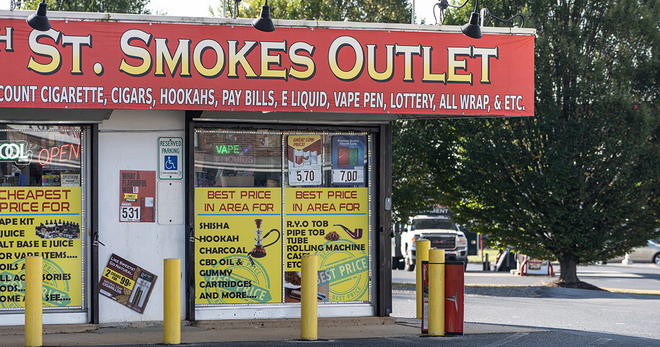4 marketing tactics e-cigarette companies use to target youth
From introducing appealing flavors to offering college scholarships, manufacturers and sellers of e-cigarettes aggressively target young people.
There are few federal restrictions on e-cigarette marketing, allowing companies to promote their products through traditional outlets — such as TV and radio — despite a ban in 1971 on cigarette advertising on both outlets to reduce cigarette marketing to children. E-cigarette companies also take advantage of other marketing outlets, including the internet, retail environments and recreational venues and events.
Youth and young adults are widely exposed to e-cigarette marketing and have high awareness of e-cigarettes, which are the most popular tobacco product among youth. By 2016, nearly 4 out of 5 middle and high school students, or more than 20 million youth, saw at least one e-cigarette advertisement.
Here are four ways e-cigarette companies market their products to target young people.
1. Offering scholarships
Several e-cigarette companies are offering scholarships, ranging from $250 to $5,000, that involve asking students to write essays on topics like whether vaping could have potential benefits, according to the Associated Press. For example, one company asks applicants to write about whether e-cigarettes minimize smoking’s negative effects.
E-cigarette manufacturers often say that their products are intended for adults who want to quit smoking; however, the AP reports that, “although some of the scholarships are limited to students 18 and older — the nation’s legal age to buy vaping products — many are open to younger teens or have no age limit.”
“Most of these kids are not smokers,” said Robin Koval, CEO and president of Truth Initiative®, in the AP story. “What [e-cigarette manufacturers are] saying and what they’re doing don’t seem to agree here. But that’s not surprising.”
2. Creating a buzz on social media
E-cigarettes make frequent appearances on social media newsfeeds and timelines. Most recently, emerging e-cigarette brands, like JUUL, have relied heavily on social media to market and promote their products.
For its launch in 2015, JUUL spent more than $1 million to market the product on the internet, according to one research study. The brand has paid for campaigns on Twitter, Instagram and YouTube to promote images and company-sponsored ads that associate JUUL with being cool, having fun, relaxation, freedom and sex appeal.

The study found that social media growth — especially the number of JUUL-related tweets — “highly correlated” with JUUL retail sales. The number of JUUL-related tweets skyrocketed from a monthly average of 765 in 2015 to a monthly average of 30,565 in 2017. By the end of 2017, JUUL captured more than half of the entire e-cigarette market share.
3. Sponsoring music festivals and events
In 2013, blu eCigs® sponsored the Sasquatch! Music Festival in Washington, which featured a vapor lounge with surprise guest appearances from top performers, device charging stations, an interactive social media photo booth and samples of blu eCigs. More recently, JUUL sponsored a “Music in Film Summit” at the 2018 Sundance Film Festival in Utah.
Both of these examples are marketing tactics that are banned for cigarette and smokeless tobacco companies (however, these companies skirt these restrictions with other types of experiential marketing). The 1998 Master Settlement Agreement and the 2009 Family Smoking Prevention and Tobacco Control Act prohibited cigarette and smokeless tobacco companies from sponsoring music, sports and other cultural events because of evidence that linked these types of marketing tactics with youth tobacco use. Other types of tobacco products, including e-cigarettes, are not bound by these restrictions.
4. Introducing appealing flavors
The 2009 Family Smoking Prevention and Tobacco Control Act banned flavors in cigarettes — except menthol — to curb youth appeal, but flavors are still allowed in other tobacco products. E-cigarette companies capitalize on this gap in regulation by offering kid-friendly flavors, such as cotton candy and gummi bear, and packaging e-liquids to look like common food items.

Youth e-cigarette users cite flavors as a main reason they begin using e-cigarettes. A study that included middle and high school students found that 43 percent of young people who ever used e-cigarettes tried them because of appealing flavors.
In May 2018, the FDA and the Federal Trade Commission took joint action against several e-liquid companies that marketed their products to look like candy or other kid-friendly food items, such as Reddi-wip, Nilla Wafers and Warheads candy. Truth Initiative has repeatedly called on the FDA to fully regulate e-cigarettes to reduce youth appeal, access and use.
Learn more about e-cigarettes with the Truth Initiative resource: E-cigarettes: facts, stats and regulations.
More in tobacco industry marketing
Want support quitting? Join EX Program
By clicking JOIN, you agree to the Terms, Text Message Terms and Privacy Policy.
Msg&Data rates may apply; msgs are automated.


